MUSEUMSAKADEMIE
Martin Lesjak and Anastasija Lesjak
Keynote - Interdisciplinary thinking hub
The museum as soundscape – possibilities of acoustic exhibition design
Bern, CH
Herausgeber und Medieninhaber
INNOCAD ARCHITEKTUR ZT GMBH
Grazbachgasse 65a
8010 Graz
Austria
T +43 (0)316 710324
F +43 (0)316 71032418
M office@innocad.at
Vertretungsberechtige Geschäftsführer: Martin Lesjak, Peter Schwaiger
Firmenbuchnummer FN 177114m
Landesgericht Graz
UID-Nr ATU 48900104
Raiffeisenbank Aichfeld
Konto Nr. 00012223129 BLZ 38346
IBAN AT763834600012223129
BIC RZSTAT2G346
Concept & Webdesign: INNOCAD and Nice Department
Webdevelopment: Nice Department New Media OG
Graphics, photos and text portions of the following internet pages are copyright protected and fully owned by INNOCAD Architektur ZT GmbH. The use of these pages is limited to personal use only. Changes to the content of these pages or the distribution of copies of these pages and images is not permitted. All information located on this server is to be used at your own risk. In no way is the provider of the page content, INNOCAD Architektur ZT GmbH, responsible for damages resulting from the use of the enclosed information by a third party. For individual photo credits, please contact our office.
Despite our careful check in regards to the content, INNOCAD is not responsible for the content of any external links. For the content of these linked pages, each appropriate operator is exclusively responsible.
Copyright © INNOCAD, 2015 - 2024, All rights reserved

in collaboration with Eva Stern (wall art), GOL Lichtdesign (lighting design), Severin Su / 13&9 Design (sound design) and Lambda Labs (speaker system)
The temporary exhibit, “how it was. Space and History,” is one piece of a four-part provincial exhibition in the Austrian state of Styria which showcases the region´s cultural heritage on the first floor of the History Museum in Graz. Located in Palais Herberstein, the museum is a significant historic building in the city center. The 500 square meter exhibition, spanning from the beginning of our era to the 20th century, aims to make ancient traces of historic architecture, landscapes, borders, legislation, and society legible and visible. The journey through time and space begins with immersive sounds and visuals, animated morphing boundaries accompanied by changing linguistics and dialects. The “black box” circuit, an existing series of hermetically sealed wooden room cells from the 90s ingrained in the historic premises, provides the framework for this exhibition. To invite visitors to participate and perceive history in an unexpected and unpretentious way, four diverse sensory experiences were introduced into the space: shell, structure, floor, and sound. The further one progresses in the 10-room loop, the denser and more complex, scaled, accelerated the experience becomes. The transformation of the neutral SHELL into an artistically translated landscape, untouched by human hands, was the first step. An infinite landscape loop wraps around the walls (artwork by Eva Stern) and metaphorically depicts the pristine nature humans found on earth, which was then successively modified, reshaped, and transformed. Traces of these human interventions become legible as gaps in the landscape and wall, also contextualizing the connection between objects within the historical context of the palais. From the cutouts, a spatial wooden STRUCTURE emerges, referencing material and dimensions of the shell´s wooden-frame construction. A single element, rotated on its coordinate axes, is multiplied and proliferated into a three-dimensional space from the floor, wall and ceiling, acting as a display for a myriad of historic maps and scale models. The interplay of structure, objects and gaps in the landscape offers insights and unveils previously hidden layers of historic masonry and housing technology. The adequacy of human action is both challenged and reflected through the lens of penciled graffiti. Visitors stride across the FLOOR projected with town and city structures and typology, a network of roads and paths – becoming part of it, immersed in it. Large exhibits, such as a Roman tombstone, pillory, delicate organ fragment, and military tent, line the wayside as flotsam and witnesses of the past. The SOUND installation, created and produced by 13&9 Design in collaboration with Severin Su, is a key element of the scenography contributing to the multidimensional visitor experience. The two-tier composition is based on an abstract and a narrative sound layer. The abstract layer emphasizes the spatial and conceptual design themes – densification and complexity, and scaling and acceleration – through three elements: drumbeats, noise, and heartbeats. The narrative layer accompanies the space with sound effects that mirror the atmosphere of each period while also referring to specific exhibits. Reflecting on our past as it relates to its impact on our present and future, the final room, entered through a narrow and long transitional space, concludes the exhibition and poses the questions: What is forthcoming? What remains? The thought-provoking installation constructed from re-arranged and layered landscape cutouts of preceding rooms, leaves visitors in a new and natural environment. To meet the standards of a contemporary and mindful contribution, the pieces were produced locally in the museum´s workshop, made from renewable, recyclable, and partially re-used materials.
Jörg Kindermann,
Martin Lesjak, Anastasija Lesjak, Lisa Nett
Martin Lesjak and Anastasija Lesjak
Keynote - Interdisciplinary thinking hub
The museum as soundscape – possibilities of acoustic exhibition design
Bern, CH
Issue 141 / 2021
TWN
English / Mandarin
HISTORY MUSEUM – HOW IT WAS. SPACE AND HISTORY
"how it was. Space and History, Graz, Austria"
Martin Lesjak and Anastasija Lesjak
Keynote
Neue Ganzheitlichkeit
Gmunden, AUT
Martin Lesjak
Panel
Geschichte im Raum. Zum Wechselspiel von Mensch und Natur
Graz, AUT